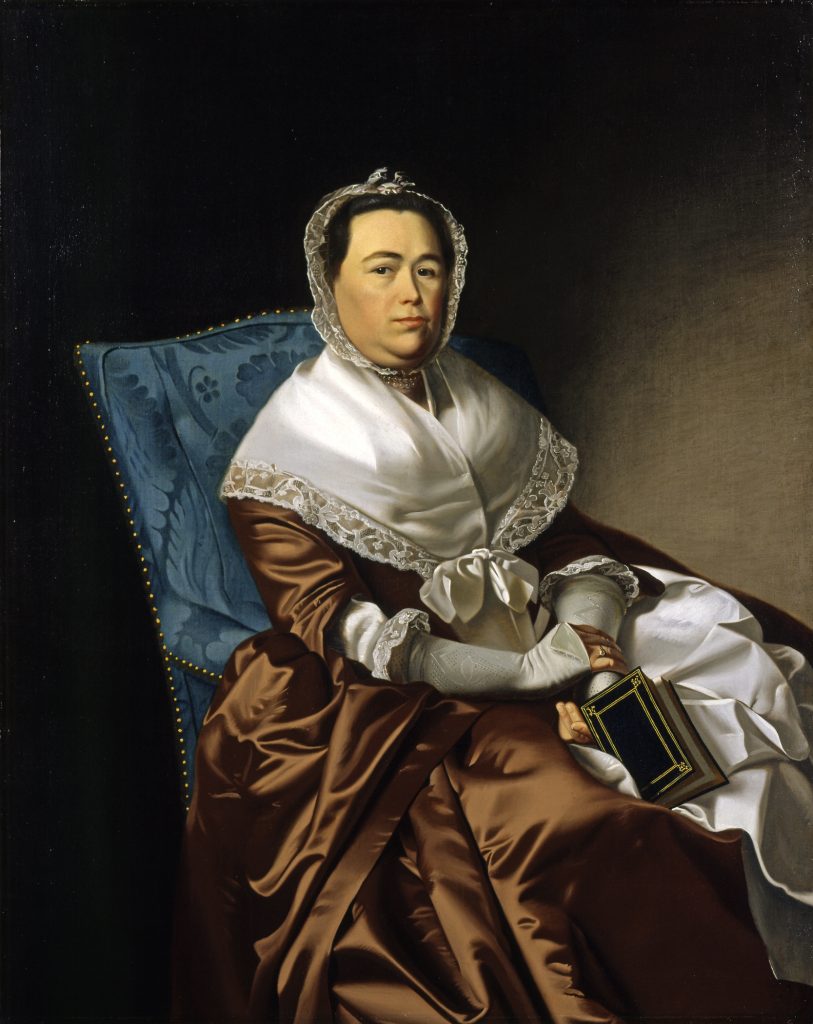1. Assign the class to examine Mrs. James Russell (Katherine Graves) and Sir William Pepperrell and His Family. Students should list on the board some characteristics of Mrs. James Russell and Elizabeth Royall (Lady Pepperrell) based on evidence in the paintings. Encourage students to read the paintings for themselves. Examples of characteristics and biographical details are:
- Mrs. James Russell: dignified, affluent, educated, daughter of a puritan, wife of a magistrate, mother of 11
- Elizabeth Royall: attractive, aristocratic, blessed with a great fortune, mother of a male heir
2. Ask the students to think about the terms on the board as they examine the paintings. Assign students to read the background information on these works of art. Within a class discussion, use the following questions to examine how the women’s portraits reveal their respective Patriot and Loyalist ideals:
- What is each woman wearing?
- What is each woman doing?
- What do her clothing and her activity tell you about this woman?
3. Assign students to examine the lyrics to the “Address to the Ladies” written by John Renfro Davis in 1769. Within another (shorter) class discussion, use the following questions to develop students’ understanding of the values associated with apparel during the Revolutionary era.
- According the songwriter, what kinds of clothes should good Patriot women be wearing?
- What shouldn’t they wear? Why?
- Do the outfits of Mrs. James Russell and Lady Pepperrell reflect the values expressed in the lyrics? Why or why not? Is there a difference between the clothing of the two women?
4. Assign students to read the Chronicle of the Revolution about the Boston Tea Party and the excerpt on Boston in 1775. Using that description, their knowledge of the revolutionary era in Boston, the information they have gathered from Davis’s lyrics and their analysis of the portraits of the two women, assign the students to consider how each of these women would have reacted to the Boston Tea Party in November 1773. Assign students to write a diary entry (one paragraph for each woman) that responds to this event from the point of view of each of these women.
5. Artists add specific details or features to the portraits they paint to signify information about their subjects and the world in which they live. Assign students to consider the following questions to prepare for homework.
- What is the setting of each painting?
- Why might the artist have selected those settings for this person?
- How does the artist’s choice of specific details (the activities of the subjects and their settings) inform the viewer’s perceptions about these women?
Assign students to imagine themselves as artists working on a self-portrait. Assign students to write a paragraph describing the setting, clothing, and props they would include in their self-portraits to guide their viewers to a specific perception about themselves and the times in which they live.
Escrito por Sarah Russell, Profesora de Estudios Sociales
